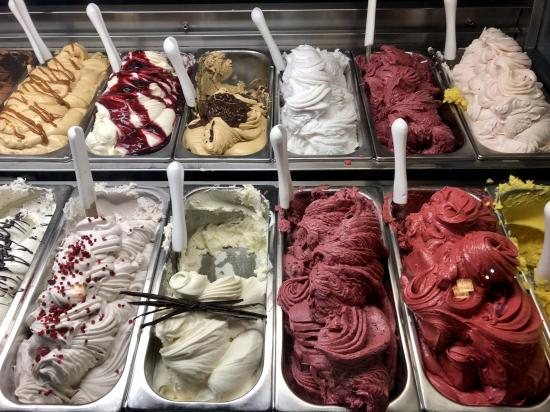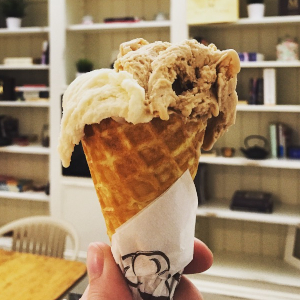First, I want to assure you, dear readers, that my use of the word ‘adulterers’ in the headline refers to those who would dilute or otherwise corrupt the the character and purity of Italy’s famous frozen treat. This would be the latest in a long line of federal laws governing the authenticity of famous Italian foods from Wine and Cheese to Olive Oil and Tomatoes…
 Real Italian-formula Gelato.
Real Italian-formula Gelato.
Gelato may be the original ancestor of what we call Ice Cream today. It’s simple recipe and rich flavours say all the best things that can be said about creamy frozen deserts. But a creeping, modern stealth movement to dilute and adulterate the Gelato formula to suit the needs and desires of manufacturers has been uncovered, and Italian lawmakers have decided to act – to save Gelato from becoming ‘just another product’.
What is Gelato?
Is not ‘Ice Cream’, if that’s what you mean. Real Gelato contains only three ingredients: 3.25 percent butterfat whole milk, sugar and flavourings. Ice Cream contains those ingredients, but also incorporates eggs and cream. Commercial Ice Cream also typically contains texturizers, stabilizers and preservatives. Most also employ artificial flavourings and colourings.
According to the history books, Gelato was first produced by an Italian chef named Francesco Procopio dei Coltelli. Oddly – and this must get under the skin of Italian Gelato purists – Coltelli apparently introduced Gelato at his Paris café around the year 1600 and the town went wild for it. Gelato is now known worldwide. And, having reclaimed the dessert as its own, Italy is the only country where artisanal Gelato has a commanding 55 percent market share over the commercially-made stuff.
First of all, let out some air
One of the most egregious moves by commercial Gelato makers has been to incorporate greater and greater amounts of air in their products to produce, a creamier, fluffier texture. This is an old trick that has been used by commercial Ice Cream makers for aeons, to stretch their product mix (and, thereby, their profits) and make their product lighter and creamier.
But, since its density is one of real Gelato’s hallmark characteristics, the Italian government is proposing that the amount of air allowed to be entrained in the product be limited to a maximum of 30 percent. Believe it or not, some co0mmercial Gelato in Italy has been tested and found to contain as much as 70 per cent air!
The secret to making authentic Gelato is to beat the ingredient mix aggressivelly, entraining only a relatively small – but critical – amount of air in the product.
The proposed new law would prescribe fines of up to 10,000 Euros (about (US)$12,000) for manufacturers found guilty of ‘inflating’ their Gelato.
Additional prohibitions might include…
Lawmakers are also lobbying to have artificial flavours, colours and added saturated fats. We assume that similar fines would apply to those who would transgress the the sacred 500-year-old Gelato recipe. And, since enacting laws that protect the ancient names and formuli for signature Italian foods is almost a national sport for the country’s lawmakers, there may be even more suggestions to come.
My take
Other commentors have observed that the proposed new law would be a big win for artisanal Gelato makers and a big pain in the process (and profits) for commercial manufacturers. But I have to admit, I like the idea that, going into a small café in Italy or a large resto alike, I could be sure I was getting the real deal if I ordered ‘Gelato’. Not to mention buying a product at the supermarket.
I’ve been musing (I know; mid-week musing is often called day-dreaming, but…) about how such laws could benefit ‘real Canadian’ products. We often hear marketing slogans such as ‘Real California Walnuts’ and ‘Real California Cheese’. That kind of thing riles folks from places like Vermont who prize their Cheeses as highly as they do their Maple Syrup. And – sorry Vermont – Canadian Cheeses have something that sets them above all the competition; something that wins them international competitions year after year. So do Canadian vintage wines.
Why not establish rules and standards that ensure, when folks anywhere buy Canadian-style foods, they’re getting the real deal? It’s been suggested, by a fellow day-dreamer, that Canadians don’t share, with Italy, the mindset that would follow-up legislation with the enforcement necessary to give such regulations teeth.
Here we go, again. It’s the criticism we hear all too often from others: Canadians are just ‘too nice’ for their own good.
~ Maggie J.

